How to Create a Training Manual That Employees Will Enjoy
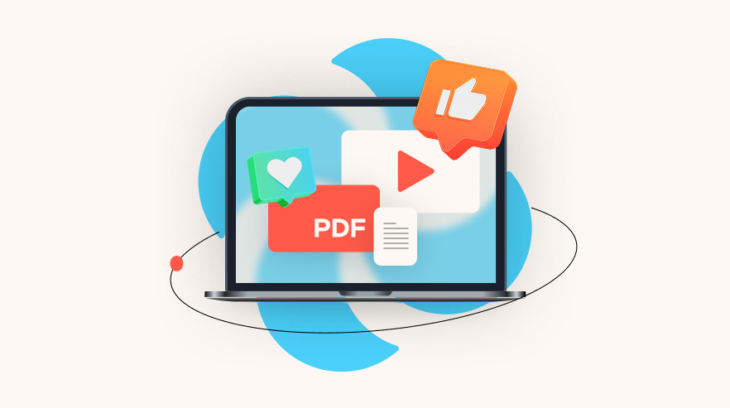
Making your training manual truly engaging and easy to use seems challenging, it’s true!
But in this ultimate guide, we’ll show you how to create engaging training manuals with ease. They’ll enhance your learners’ experiences and help you track their success easily. Let’s get started!
What Is a Training Manual?
A training manual is a structured document designed to provide learners with basic training information. Nowadays, people actively use both traditional paper-based manuals like books or booklets, and modern online courses. These modern ones are much more convenient and can reduce the time needed to learn the same amount of content by 40% to 60%.
Traditional vs. Modern Manuals: Key Differences
| Traditional | Modern | |
|---|---|---|
| Convenience | Low | High |
| Time required to learn | Medium | Low |
| Adaptability | Low | High |
| Interactivity | Low | High |
| Tech skills requirement | Low | Medium/High |
| Ability to track learners’ success | Medium | Great |
| Easy access | Sometimes | Always |
According to eLearning Industry, online learning can improve employee performance by 15% to 25%. Over half of employees (51%) asked by SurveyMonkey agree, claiming that eLearning materials provide enhanced self-confidence — leading to greater success.
Why Are Training Manuals Important?
Besides the fact that employee training manuals improve staff performance, there are other benefits you can also expect:
- Consistency in training delivery. Training Industry, Inc. (TI) confirmed that consistency of training helps accelerate onboarding and positively affects the efficacy of learning.
- Better knowledge retention. Shorter formats help learners retain knowledge by up to 25% to 60%.
- Time/cost savings compared to instructor-led training. Online training takes up to 60% less time.
- Better compliance. It’s easier to make small pieces of training content compliant with company policies and procedures and general rules.
- Less manager workload. Providing employees with a rich knowledge base means keeping managers from answering the same questions over and over again.
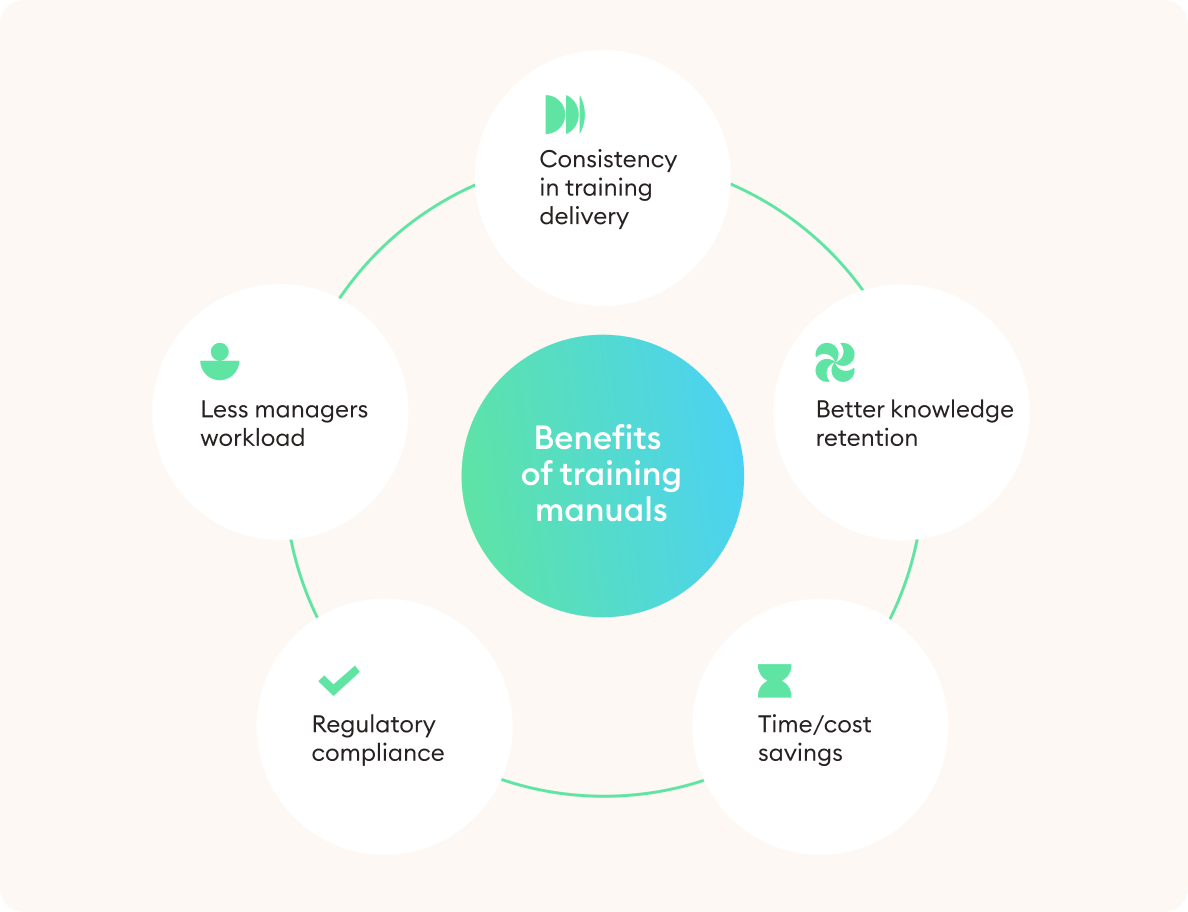
How Do You Use Training Manuals?
Training manuals can support several functions across an organization and grow company ROI up to 25% or even more. Here are some ideas on where to apply them:
Onboarding new employees
A structured training manual helps new hires get in the game and up to speed quickly, which is particularly useful for remote employee onboarding. It also provides a higher level of employee satisfaction from their first day at work.
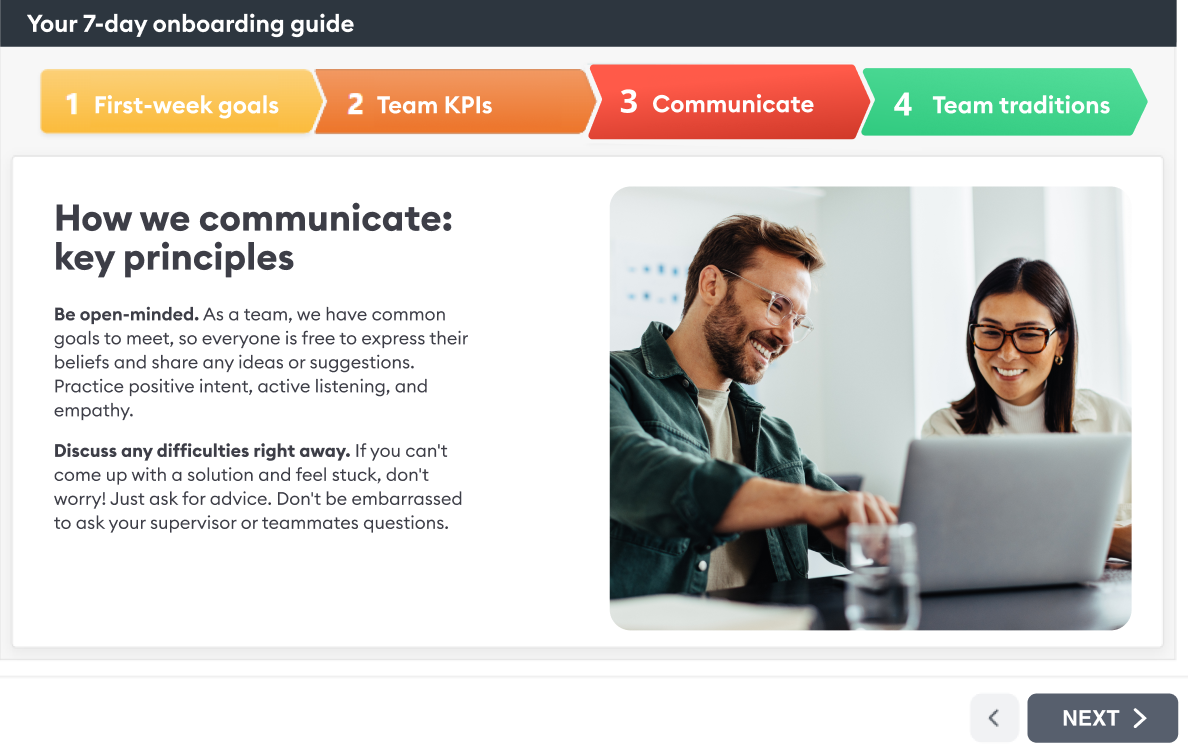
For example, McDonald’s launched McWelcome, an online platform for training new hires. Around 80% of their employees said they were happy with this onboarding, and the loyalty index grew significantly.
The more you can engage them, the happier they will be for their job, and the more you will get them to grow, the more you will get back.
Training sessions
Immersive employee training manuals offered via an LMS (learning management system) are more efficient compared to simple training. Experience-based learning with interactive elements helps to retain up to 75% of new info.
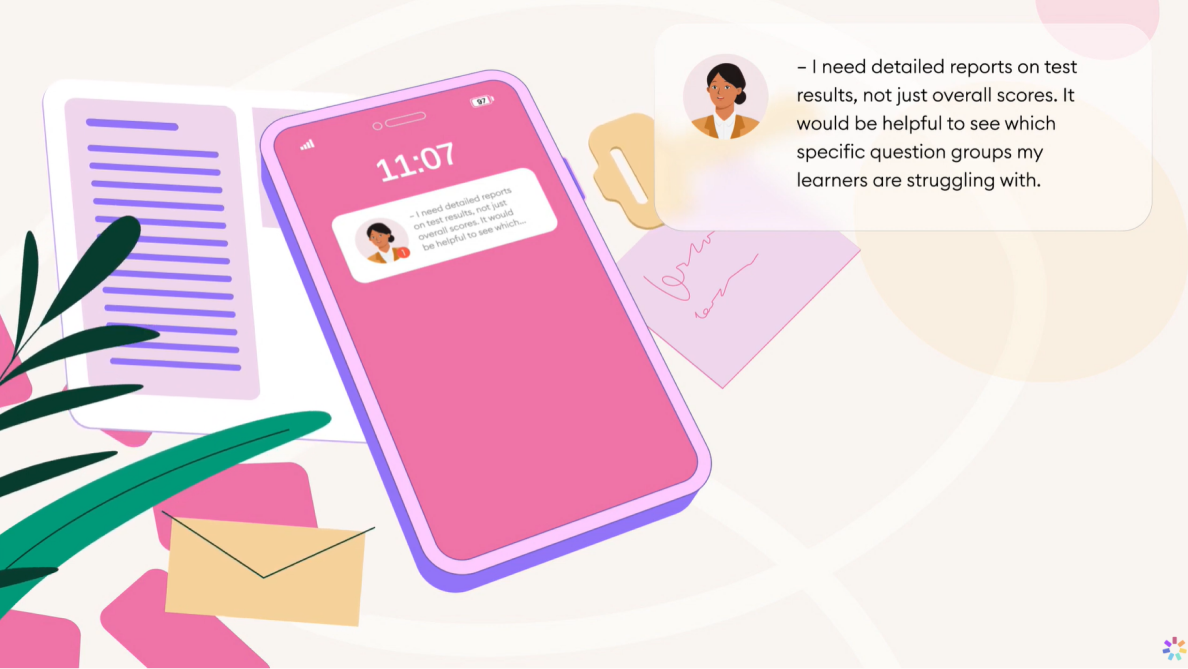
Customer education
Use training guides to explain product features and educate customers. A good example is Zappos’ short cheat sheet that helps their customers understand which product suits them best:
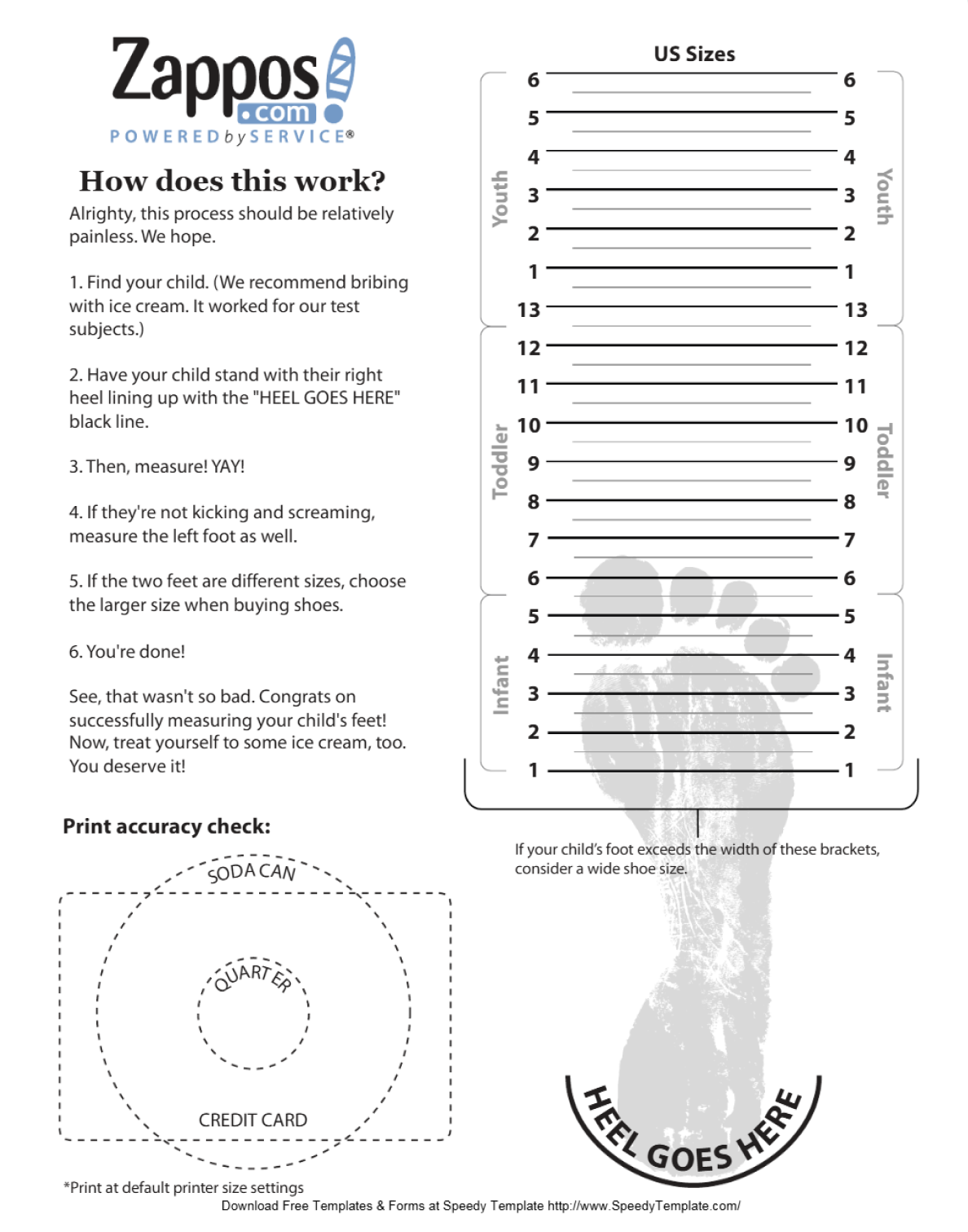
What Should Be Included in a Training Manual?
A well-structured training manual provides clarity, engagement, and measurable results. To create a great course, planning your training or even creating an eLearning storyboard will help greatly. Let’s examine the elements to include in such a plan.
- Add an introduction, a table of contents, and a general plan of the course. Provide an overview of the training manual and its objectives, and create a well-structured course outline. It needs to be clear and short.
- Define goals and objectives. For example, by Friday, you’ll submit your first sales report.
- Provide immersive examples of the topic you’d like to cover. Add some context on the situations in which the learner could need this info and show some real use cases. Role-plays or interactive games with visual examples would provide more practical use.
- Provide a list of references and jargon terms. Include recommended resources, books, articles, or websites. Explain the terminology used in the training.
It is also important to ensure that documents are accessible for remote learners and for those with compromised vision. For example, a PDF with bookmarks + audio summary will work well for all groups of employees.
Types of Training Manuals
Companies typically have multiple training manual formats in their knowledge base, each designed to serve specific needs. Below are four common types of training manuals:
Employee handbook
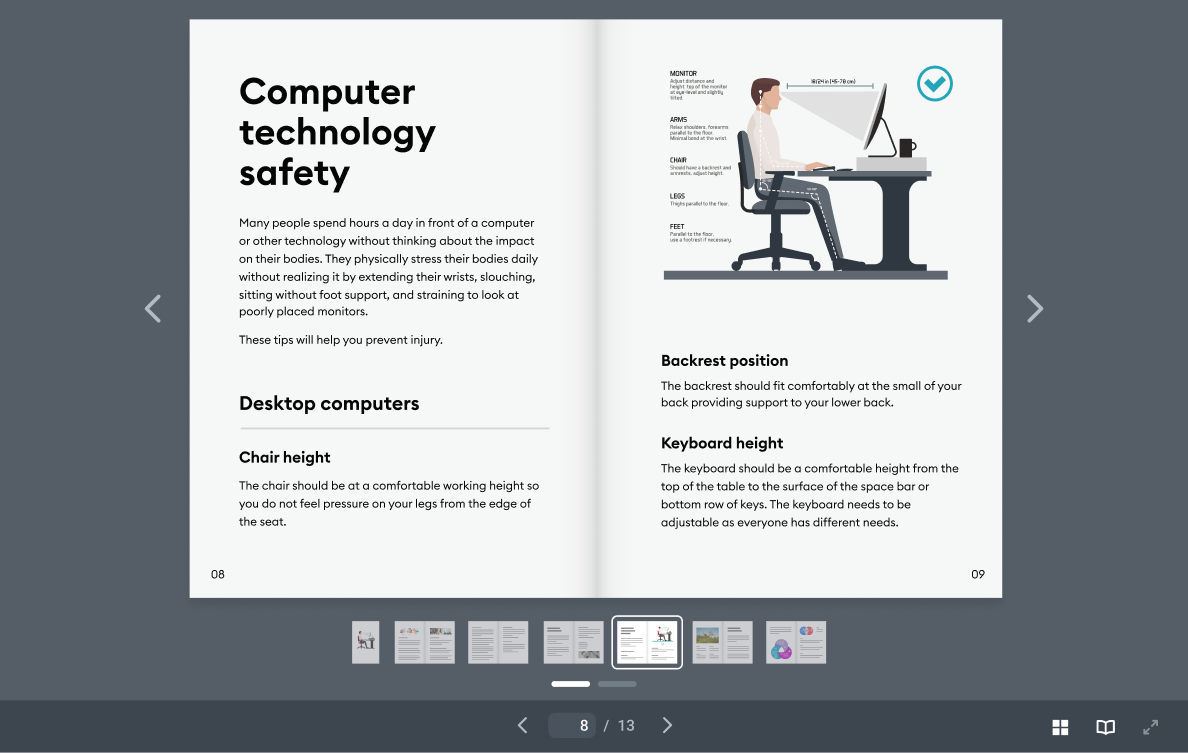
Employee handbooks are provided to new hires on their first day during the onboarding process. These manuals introduce new employees to company policies, procedures, and values. The main objective is to set clear expectations and outline employees’ rights and obligations.
Also read: How to Build a Learning Culture
Self-paced guide
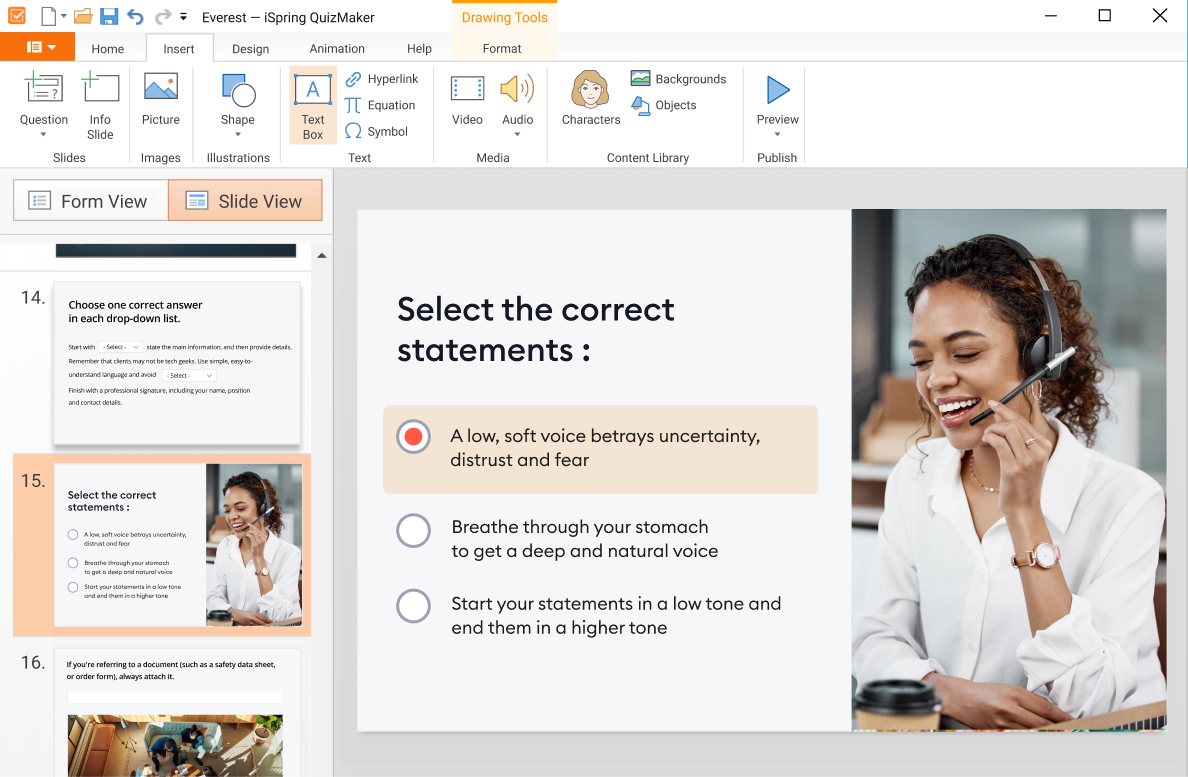
Self-paced guides provide role-specific instructions that employees can follow at their own pace. They serve as references for individuals, such as customer support agents or lab technicians.
Process documentation
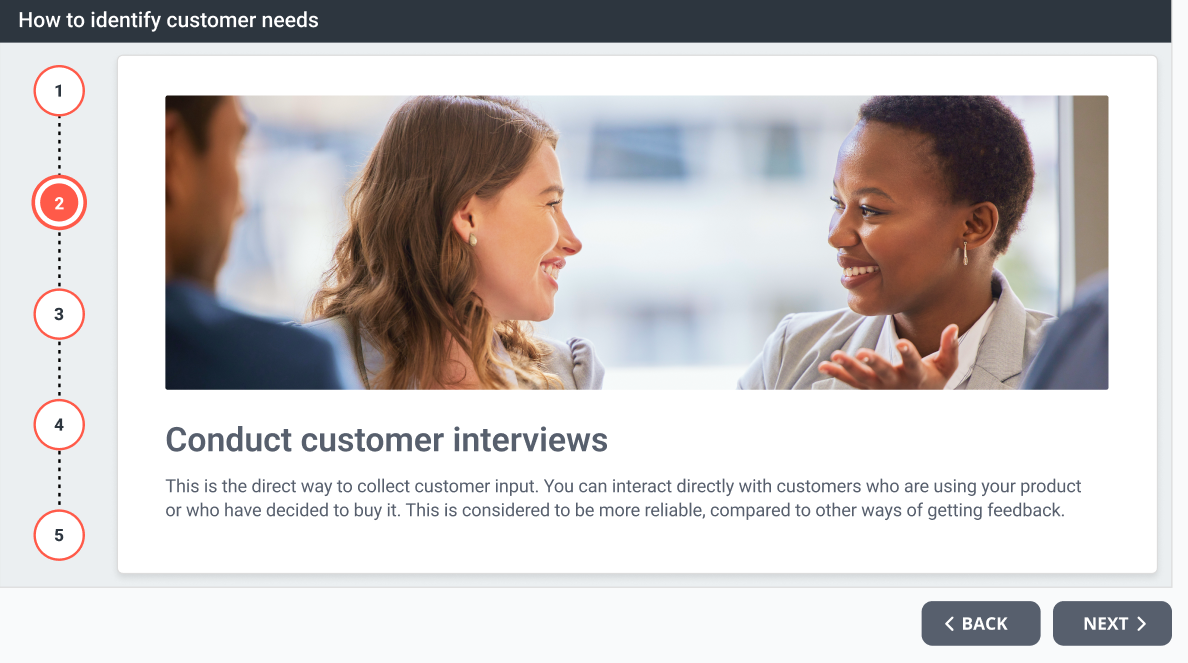
Process documentation is a set of detailed instructions on how to perform a task or a process. It uses symbols and decision points to map out the stages and milestones of your learning workflows. This kind of documentation also helps create branching scenarios before the course starts.
These and other types of training manuals can be easily converted into a SCORM format and fit in any LMS that supports it.
A Step-by-Step Guide to Creating a Training Manual
Training manual content creation is not as tricky as it may seem at first. We’ve gathered the steps here to make the process easier for you.
Step 1. Understand what you need
Before creating the content, conduct a training audit:
- Look for tasks and processes in your workplace that could be streamlined.
- Consider whether you can improve them by documenting the procedures.
- Define the intended audience (new hires or experienced staff).
- Identify the kind of training manual that will help in each case.
Step 2. Define the manual format
Now that you know what kind of training manuals you need, it’s time to determine the type and format of the content. All formats are good, but some of them might fit better based on learners’ preferences and the topic. Here are some examples:
- A printed manual, guidebook, or booklet is a good choice for topics that rarely change. It also helps when learning in places with poor internet access.
- PDF guides or DOC manuals can fit online learners. It’s convenient for those who need to look up some specific info in their manuals from time to time.
- Brief interactive modules are a good idea for microlearning training or if there are many small topics to cover.
- Online courses are a great approach for complex topics that need to transmit a great deal of info, such as upskilling programs.
Step 3. Create the content
Don’t forget to include multimedia in your projects for better learner engagement. You can add them to any part of your training manual, from the table of contents to the final thought. For example, record videos or screencasts and include quizzes and quests.
Instead of purchasing a quiz maker, video creation tool, etc. separately, you can select a comprehensive solution like iSpring Suite AI. This tool will let you create training manuals for staff training in the format of online courses.
It works as a PowerPoint add-in, so if you already know how to use PowerPoint, then working with iSpring Suite will be very easy.
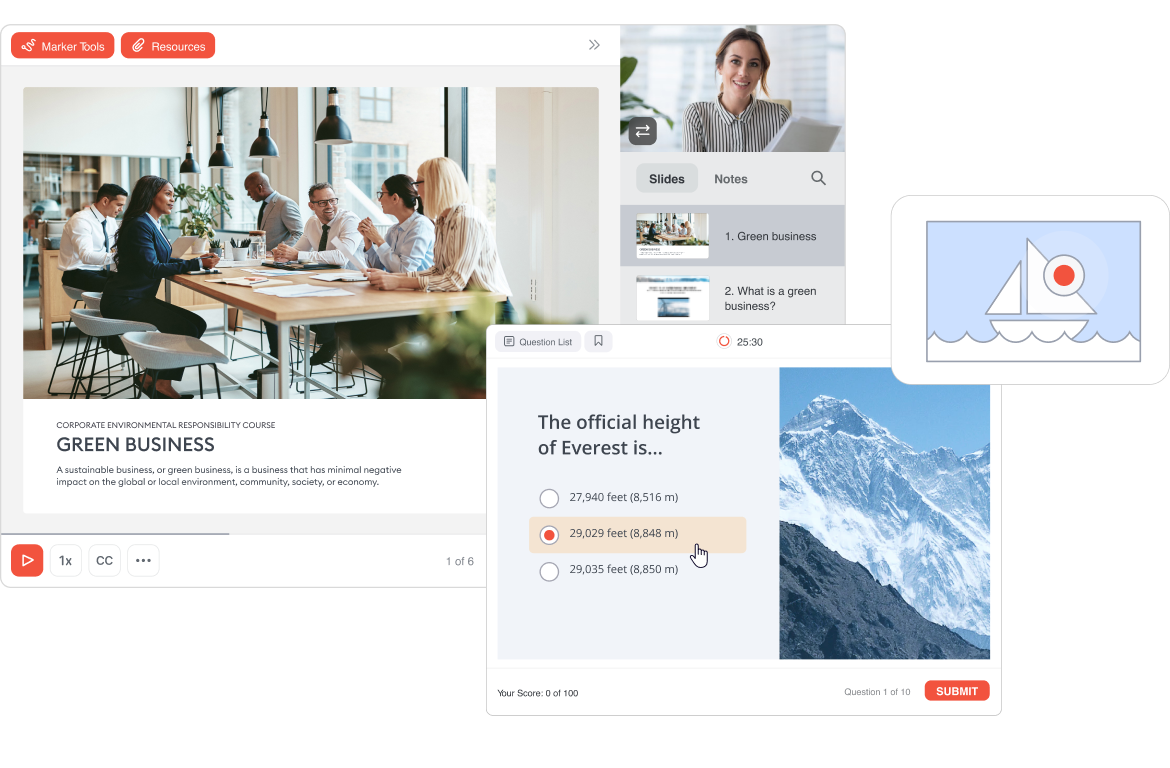
Create interactive training manuals with iSpring Suite. Try it free for 14 days!
Step 4. Deliver a manual to your staff and track their progress
Now, you need to deliver your manuals to all employees and make sure they study them.
The best solution here is launching a learning management system (LMS). If you don’t have an LMS, opt for the intuitive iSpring LMS platform to start an online training experience.
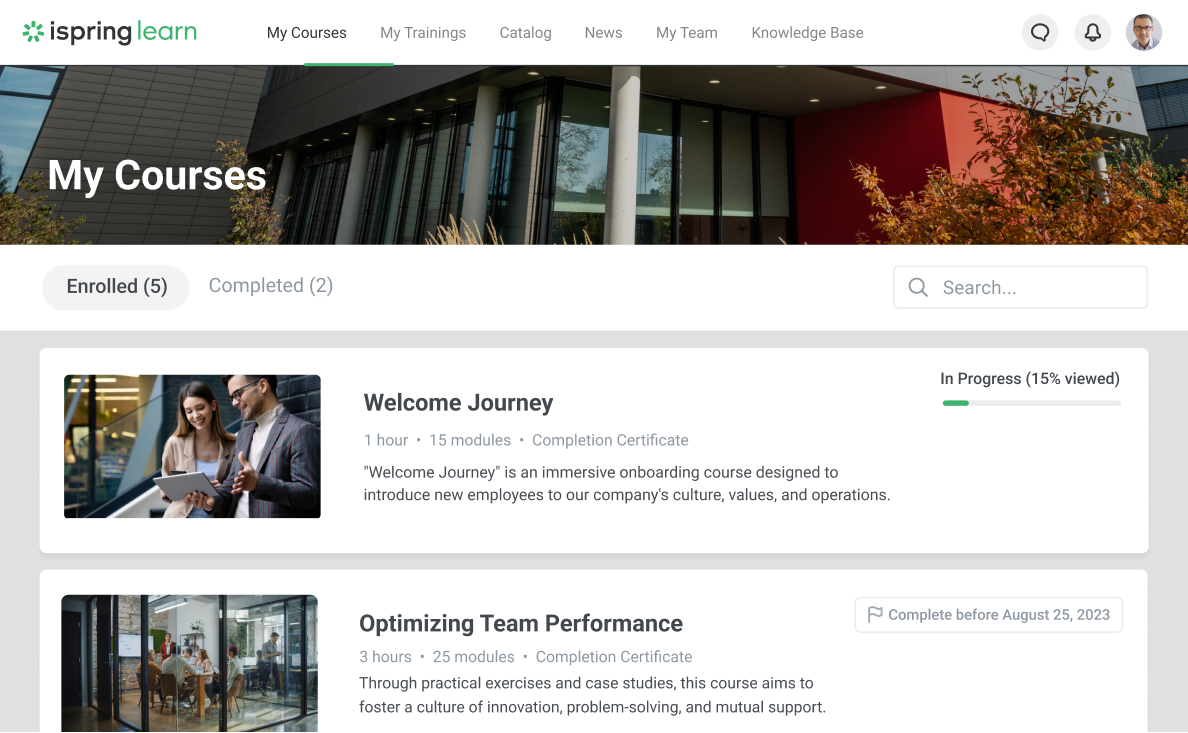
With the iSpring LMS, you can:
- Easily transform your PPTs to SCORM files.
- Create a unified knowledge base.
- Build comprehensive training programs and categorize audiences to offer your staff personalized learning paths.
- Automate training management tasks, like sending invites and reminders and managing deadlines.
- Host virtual training sessions and track staff attendance.
- Create detailed reports to evaluate the success of your employee training.
- Deliver on-the-go training with the iSpring LMS native mobile app.
- Customize the system with your corporate branding for a seamless user experience.
- Engage your employees with training activities and gamification tools, like badges and leaderboards.
- Leverage iSpring AI to generate quizzes and games.
Step 5. Collect feedback and keep your training manual content updated
Once your employees have studied the training manual, ask for feedback. This will let you find out how useful the manual is and how it can be improved.
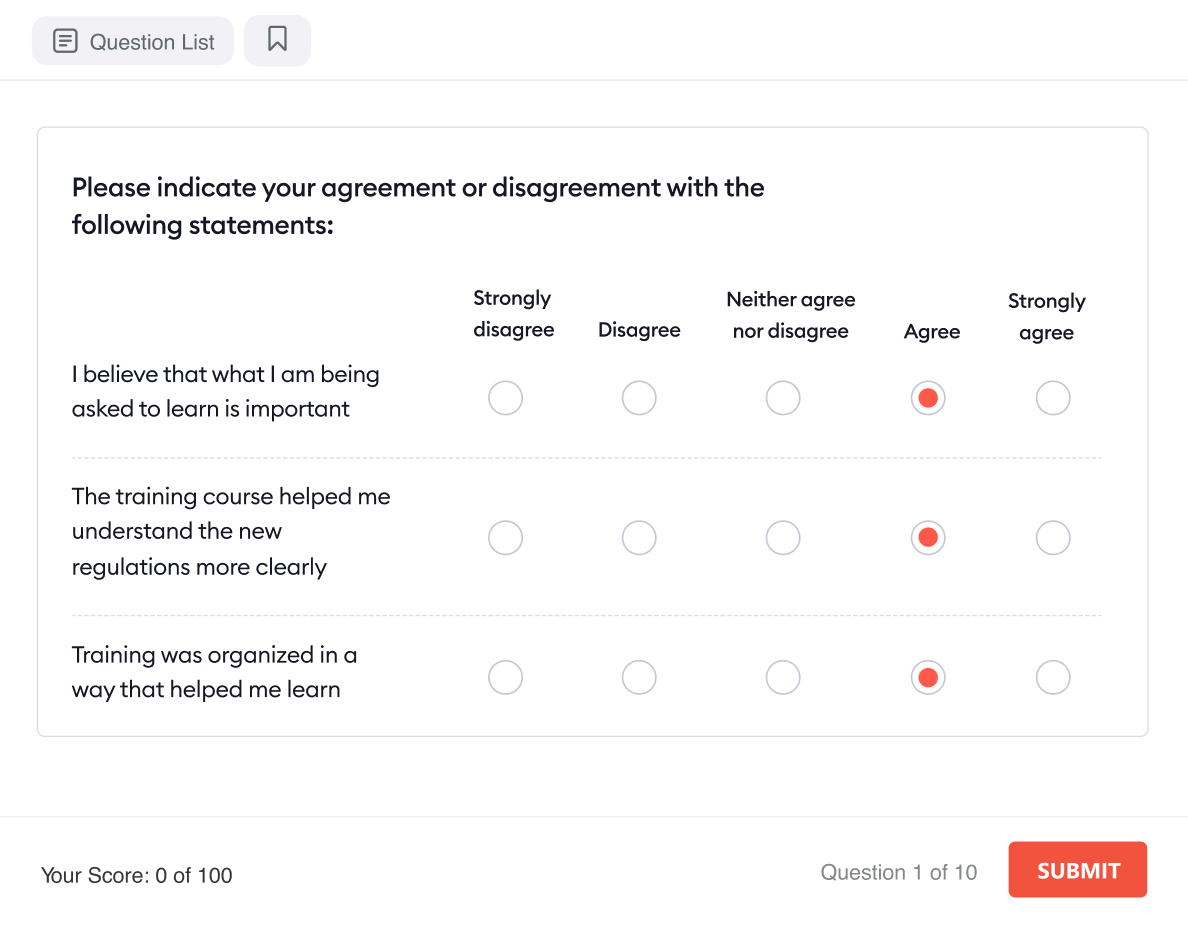
Creating Training Manuals with PowerPoint and iSpring Suite
PowerPoint is a great tool for creating presentation materials. However, if you want your training manuals to be interactive, engaging, and truly effective, iSpring Suite is a great alternative.
As mentioned, the solution is integrated with PowerPoint. This means you don’t need to study a new complex software. Once you’ve installed the tool, the iSpring Suite tab will appear in the familiar PPT interface.

Now let’s see how to create a training manual based on your content preferences with iSpring Suite.
1. Create a PowerPoint presentation
First, you need to build a simple presentation. Support the text with images, infographics, and videos, as usual.

2. Add a voice-over
If you’d like to make your content more accessible to employees, consider adding a voice-over. This helps those with compromised vision to follow along and provides learners with dual input (visual and auditory) for better engagement. To add a voice-over, go to the iSpring Suite tab and record an audio or video narration.

With iSpring Suite, you can:
- Record an audio narration for your training manual.
- Record a video narration that will let your learners see not only slides but also a narrator.
- Convert your text to a compelling voice-over by using iSpring’s text-to-speech tool.
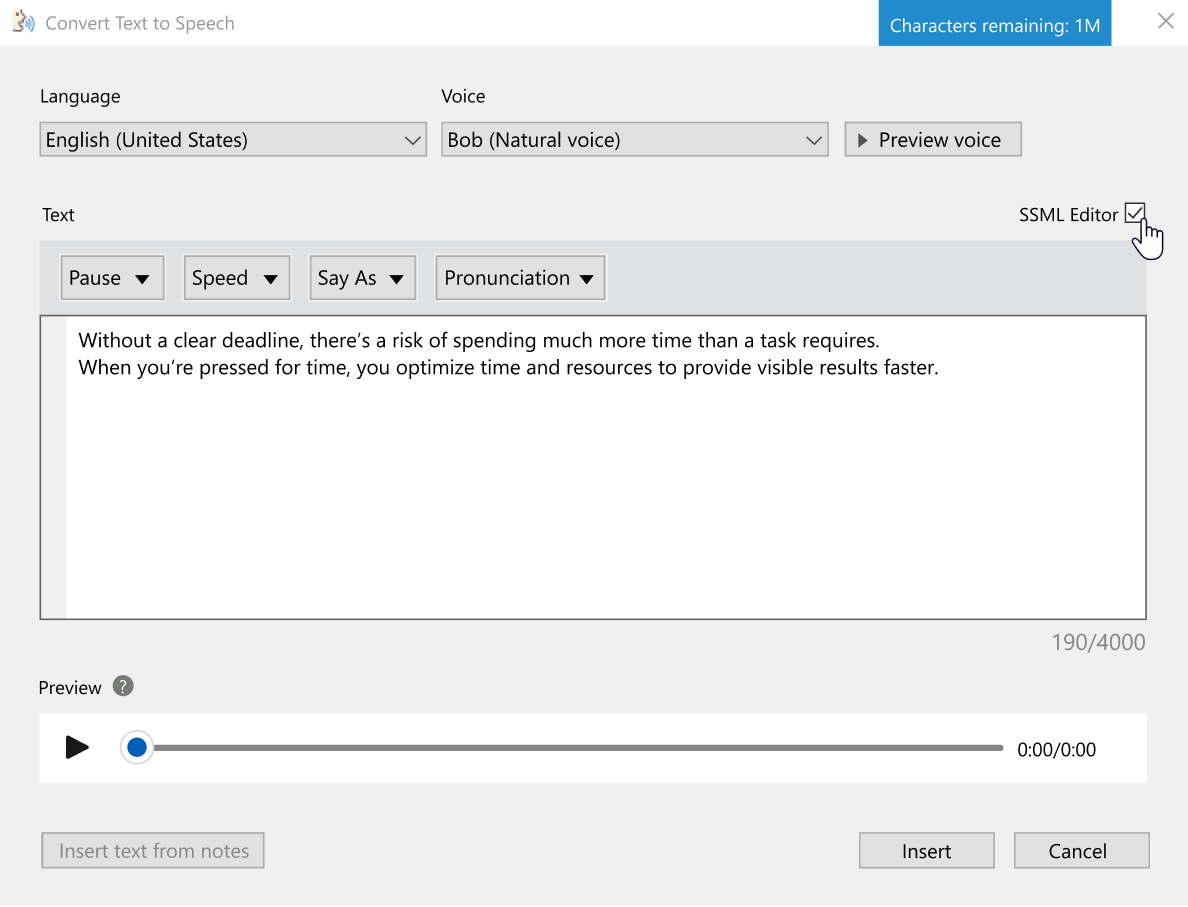
3. Record a video tutorial
Some processes, like repairing a laptop or fixing a printer, can be difficult to explain using text and pictures alone. Training videos with clear narration, subtitles, and highlights of key points can help a lot. With iSpring Suite, you can record and edit a webcam video in a snap.

You can capture your screen, together with a webcam or audio. Click sounds will draw attention to your actions on the screen and add a visual hint for each step:
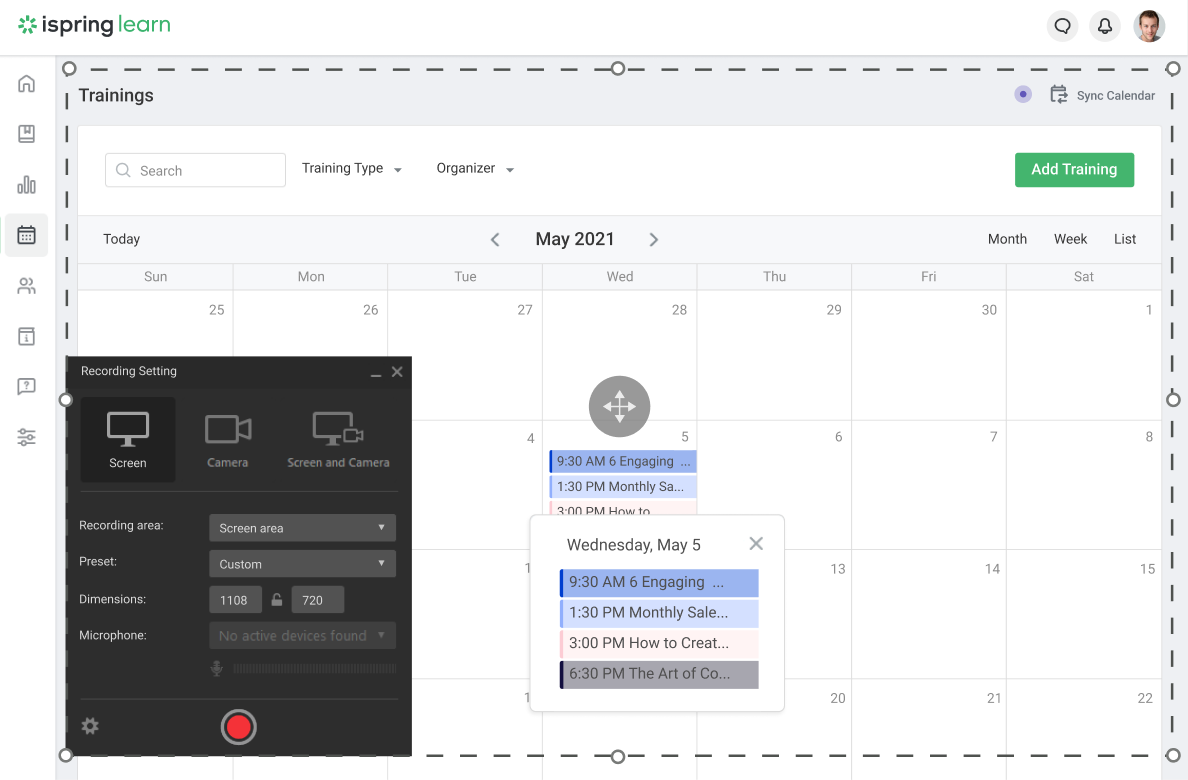
4. Create brief interactive modules
If you want to create a quick guide, visualize your brand values, present an online office tour, or use interactions.
iSpring Suite comes with fourteen interaction types: FAQ, Timeline, Tabs, Glossary, Steps, and more. You only need to choose a suitable template and fill it with your text and images.
This is a slide from a brief training manual that introduces your office and future workplace to your new hire:
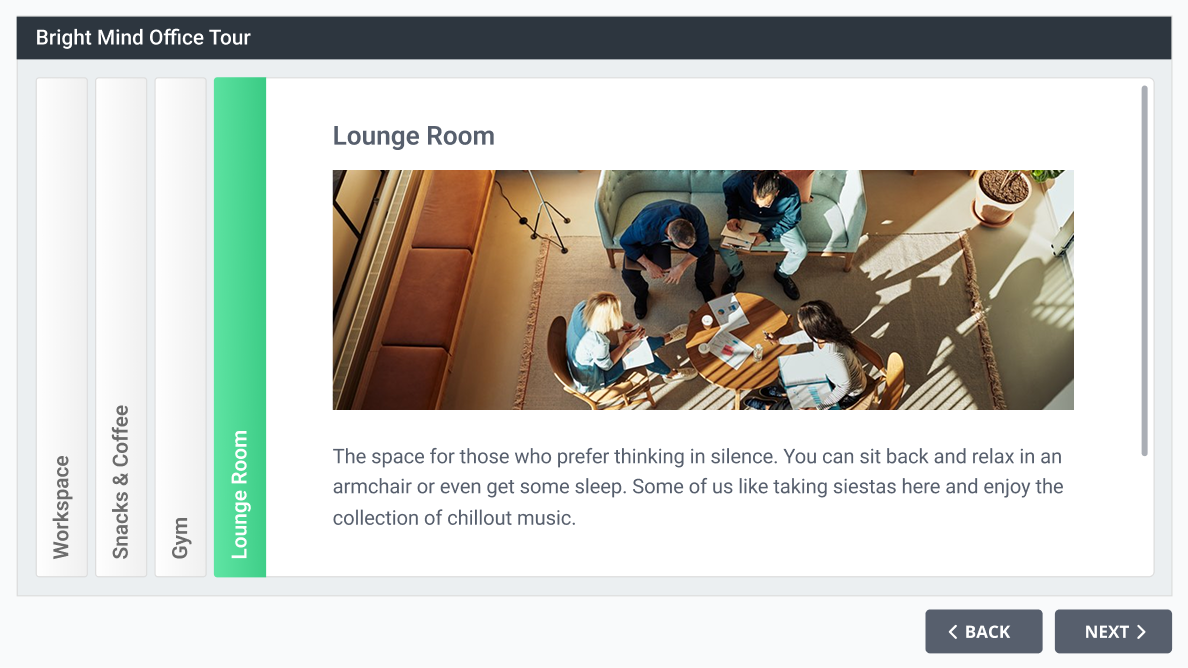
5. Build a role-play simulation
If you’d like to provide your employees with hands-on experience, create a role-play. It will be especially useful if you’re training them in communication skills, customer service skills, or management tactics.

With iSpring Suite’s drag-and-drop interface, creating a simulation is extremely easy. Just pick a suitable character, create a quiz, and provide response options leading to other scenes based on the learner’s choices.
6. Add interactive quizzes
To make sure your new hires understand the information covered in your manual, you can add quizzes. iSpring Suite offers a complete set of question templates, so you can create quizzes quickly and hassle-free.

7. Publish your training manual
Now, your manual is all set and ready, so all that’s left to do is share it with your audience. iSpring Suite offers many options. You can publish your materials straight to YouTube, send them to your LMS, or save them in a SCORM format.
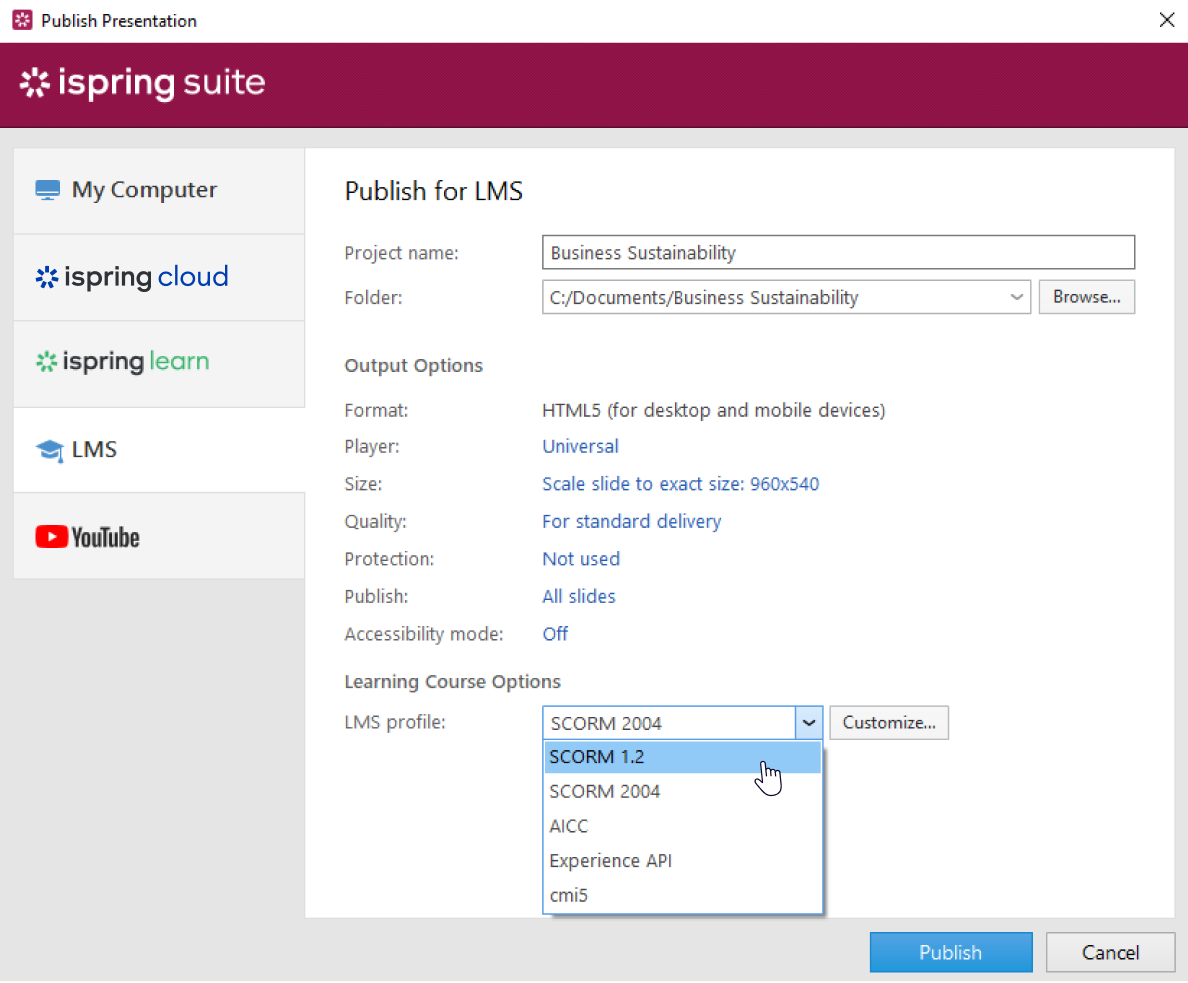
Congratulations! You’ve made your own training manual. If you’d like to see iSpring Suite in action, download its 14-day free trial.
How to Measure Training Manual Effectiveness
Of course, you want to know if your training works well. Most businesses use one of the most common evaluation models: the Kirkpatrick Model, Phillips’ ROI Approach, or Kaufman’s Five Levels of Evaluation. Let’s look at the most popular one, the Kirkpatrick Model.
This is a four-level framework assessing:
- Reaction (Did employees find the manual useful?)
- Learning (Did knowledge improve post-training?)
- Behavior (Are employees applying what they learned?)
- Results (Did the manual improve performance or reduce errors?)
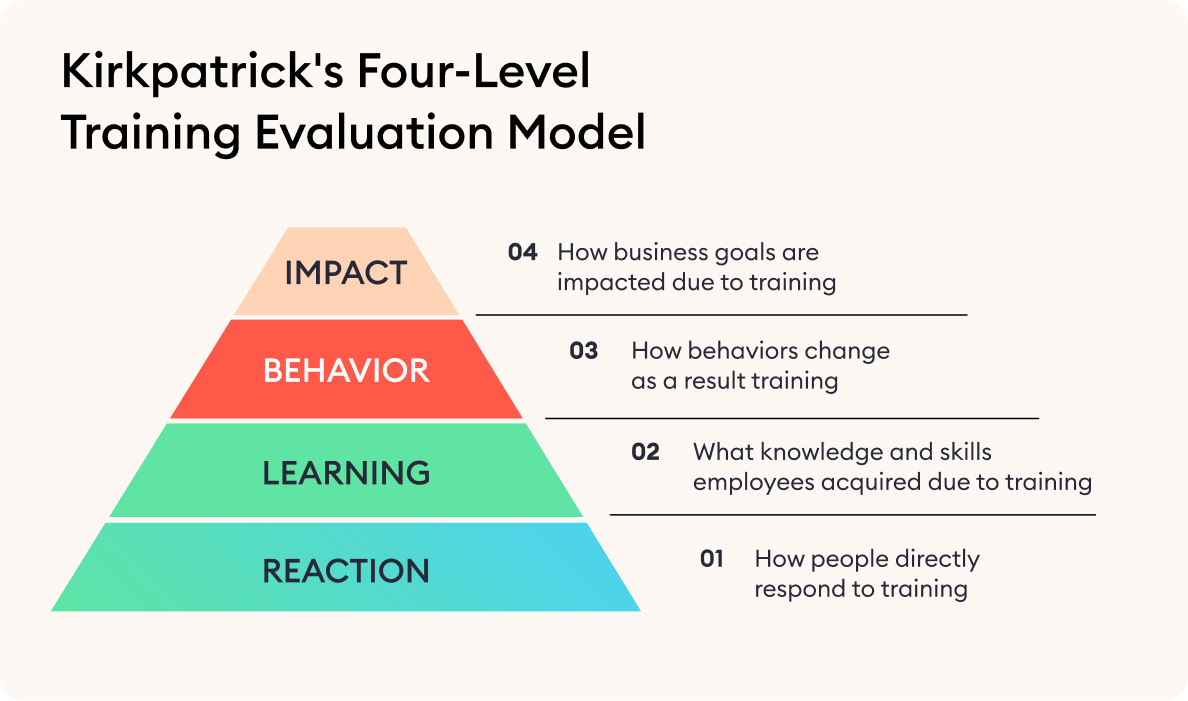
Besides this empirical evaluation, companies often quantify success by monitoring these five essential metrics:
- Completion rate. The percentage of employees who finish the training.
- Employee Net Promoter Score (eNPS). These are the statistics of answers to “How likely are you to recommend this manual to a colleague?”
- Stakeholder Satisfaction. The feedback from managers and compliance teams.
- Knowledge Retention. This metric is assessed via quizzes or follow-up tests.
- Error Reduction. This one tracks mistakes before and after training.
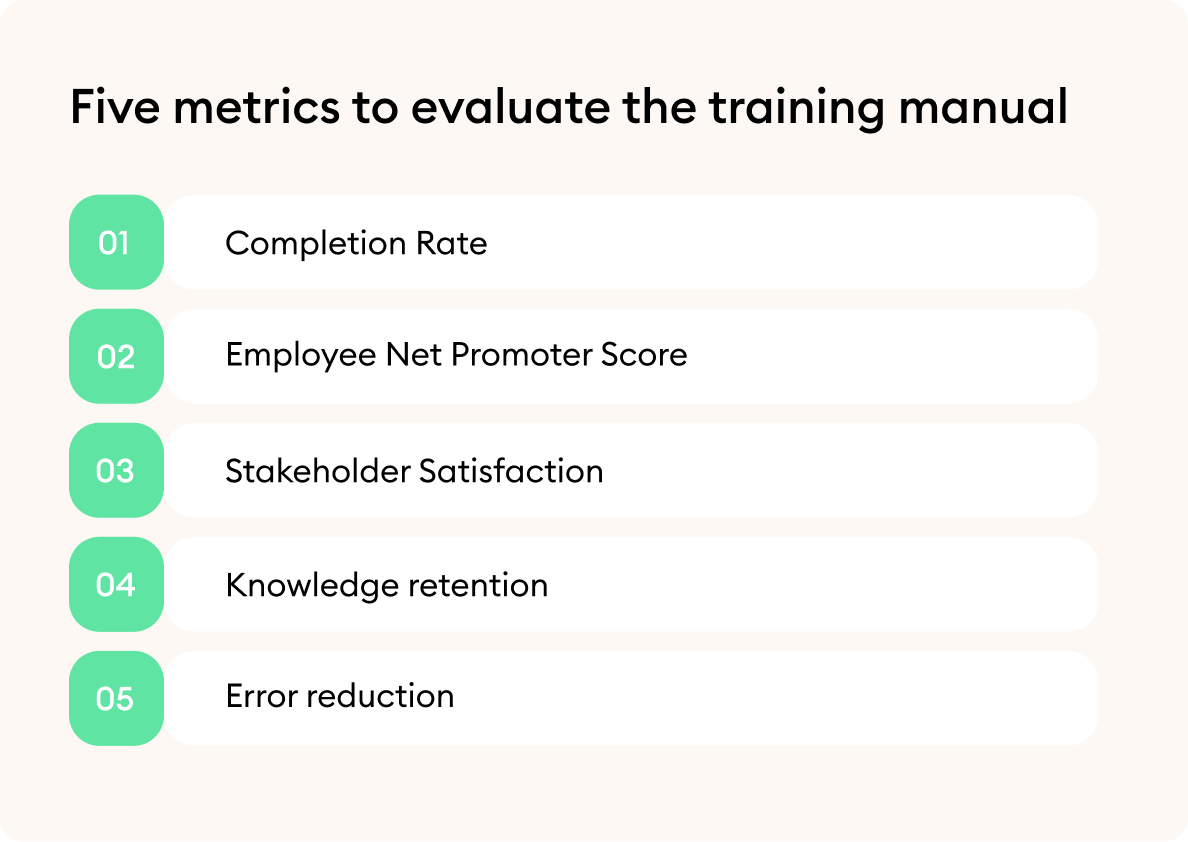
A good learning management system can also help here. For example, iSpring LMS provides reports on the learning progress and training results. It also offers details on how learners use different types of learning materials to get the information they need.
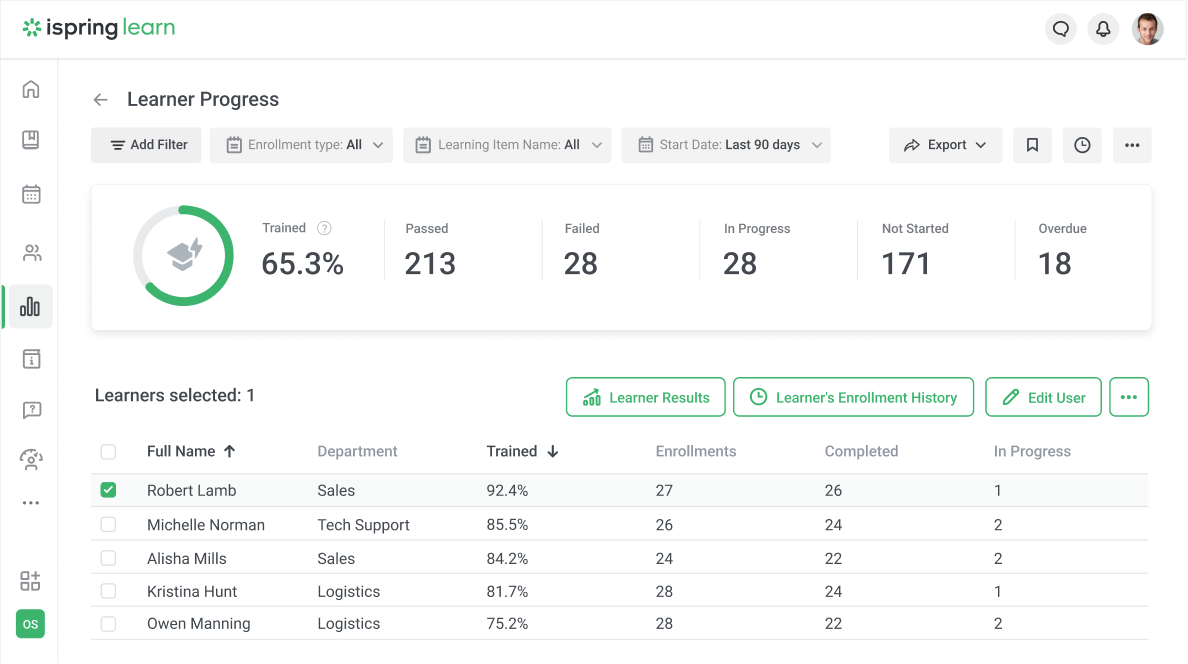
Some companies take a creative approach to training manuals, blending practical content with engaging elements. Let’s look at some examples.
More multimedia and additional materials: the Disqus experience
Complementing the training manuals with additional resources such as handouts, reference training guides, or videos is always a good idea. For example, the Disqus handbook divides content into two sections.
The first one is a formal document covering legal policies. Another one is a “culture book” focusing on the company’s values and work environment. The second part uses conversational language, colorful visuals, and engaging content to immerse new hires from day one.

Keeping it simple and accessible: The Valve Employee Handbook
Making your training manual easy to download, share, and read and/or listen to will make it accessible for different categories of learners. For example, you can use SCORM capabilities to create at least two formats: downloadable PDFs and an audio-based LMS course. Valve’s employee handbook is a good example of how interactive training can be converted to a PDF book.
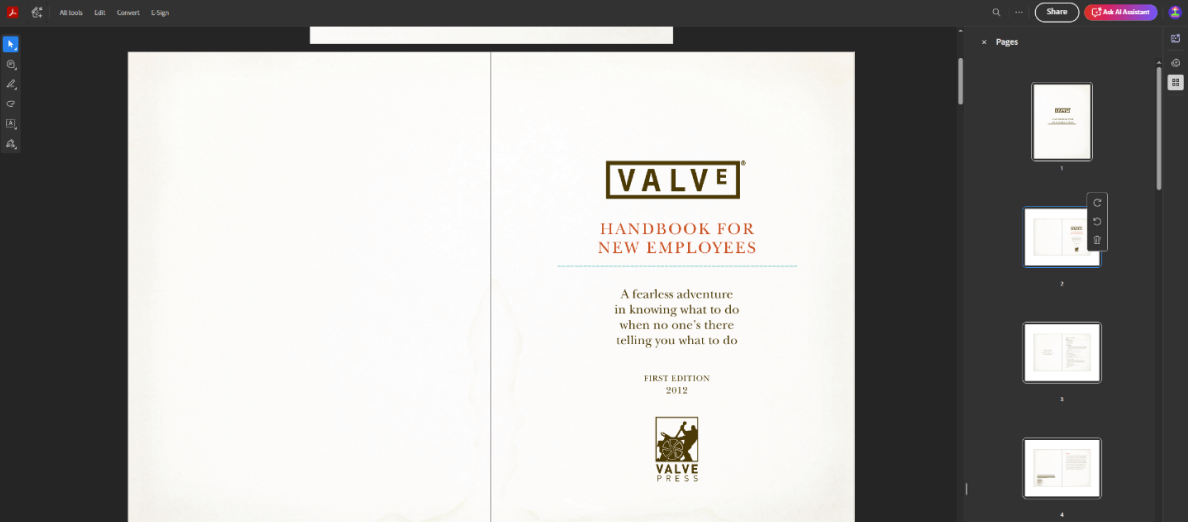
Greater readability from Netflix
Here’s another good tip: provide clear instructions and readable text. Add a table of contents and future examinations list for transparency so employees can understand what is expected of them.
For example, Netflix presents its training and onboarding materials through a 129-slide presentation, famously called the “Culture Code.” This manual is concise and direct, focusing on the company’s policies and expectations for employees. Each slide contains only a few key points, keeping the material easy to understand and digest.
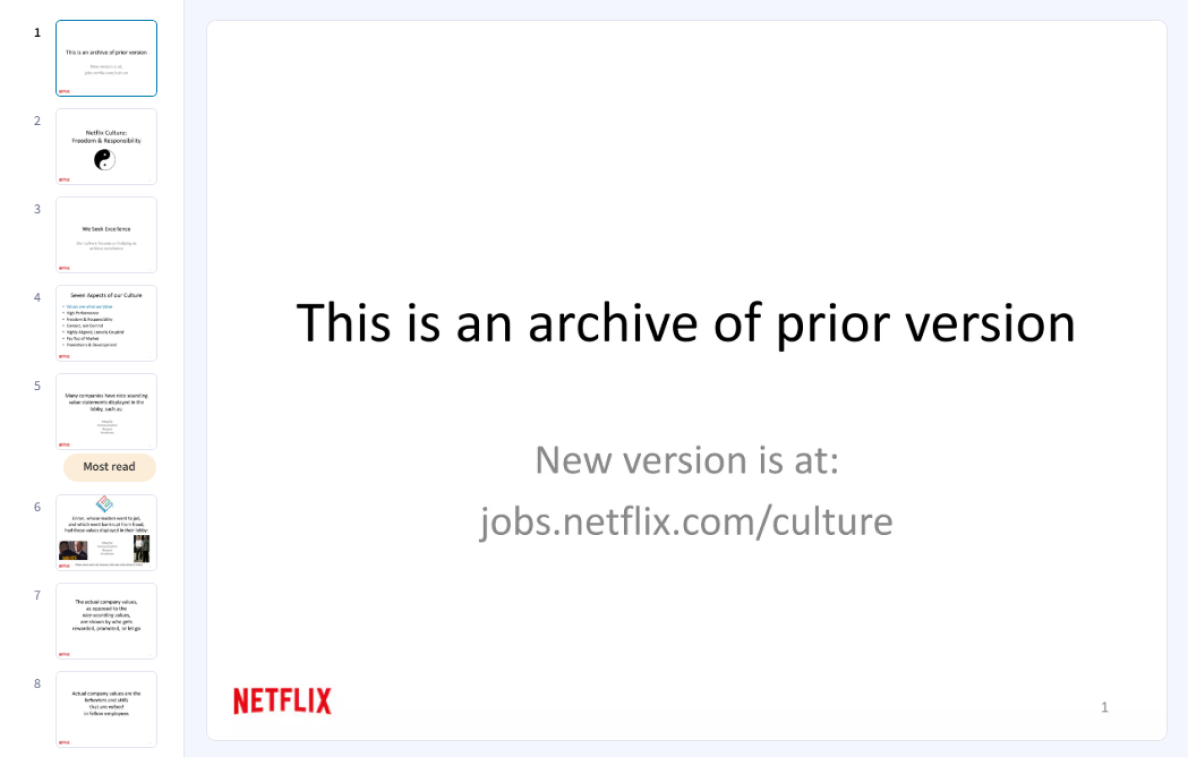
Of course, there are more tips, like including real-world examples, making regular updates, and more. Start with these simple tips to enhance your training projects now, and soon you’ll know what works best for you.
Training manual FAQs
Are handbooks and manuals the same?
Handbooks and manuals are basically the same. However, there’s a slight difference: handbooks are more focused on rules, regulations, and policies, while manuals provide guidelines and instructions.
What’s the ideal length for a training manual?
Training manuals should balance depth and usability. While there’s no standard length, best practices suggest 5–20 pages for quick-reference guides. Sometimes, 30–50 pages are used for role-specific training; more pages are used for comprehensive technical or compliance manuals.
Digital vs. printed training manuals: Which is better?
Digital wins for scalability and compliance-heavy industries, but printed may suit environments with limited tech access (e.g., manufacturing floors).
How can you create training manuals for different learning styles?
A one-size-fits-all manual risks leaving some learners behind, as people prefer different learning styles:
- A visual style requires many images and a user-friendly design.
- An auditory style implies the use of audio recordings along with visual presentations.
- The kinesthetic style supposes having role plays and even some real-life actions that learners must perform.
By blending visuals, audio, text, and hands-on activities, you can create inclusive, engaging training materials for individual purposes.
Final Thoughts
Creating many training manuals may seem challenging. In reality, each one is your step toward creating a unified knowledge base for better employee learning and efficiency.
To make an online course that’s more than just boring text and do so with ease, you’ll need the right tools. Get the iSpring Suite free trial and start making different types of engaging learning materials right away!








